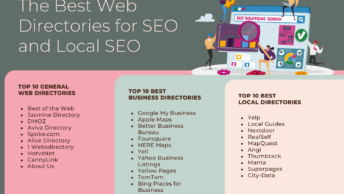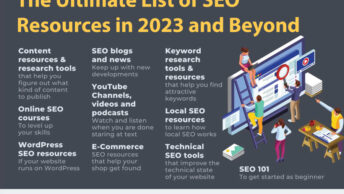For those who aren’t marketing and technology experts (aka: most of us), all the different kinds of content may seem to run together like a bad abstract painting. Which kinds should you use and under what circumstances? Do you need a blog or a website? Should you tweet it or instagram it? Creating a content marketing plan can easily become a discouraging whirlwind of confusion.

Marketing used to be fairly simple and single-faceted before technology took over. You’d make a quick ad for your product with a cute slogan and a smiling lady, print up some copies, and hang them around town. Or maybe you’d pay to place that ad in a local magazine, or hire an enthusiastic mascot and stick him outside your business’s entrance. There were fewer things to consider back then.
Today, it’s easy to get your head spinning over all the different paths you can choose to market your business. It’s risky to put lots of money into something when you haven’t the slightest clue about its effectiveness. But when you really think about it, we’re lucky. Today’s techniques really blow the old ones out of the water. We have instant connection on our side – email newsletters, blogs, social media platforms, websites, etc. No more hoping someone will happen to stumble upon your flyer on a street corner (ok sure, that can still happen). But once you get clear about your objectives and what content is suitable for those objectives, content marketing can suddenly become fun.
Certainly, it may not be realistic for you to utilize every one of these kinds of content effectively. However, if you’re using none of them, you’re missing a huge opportunity to liven up your marketing and convey your brand’s personality. Content doesn’t need to overtly promote a business, and that’s the best thing about modern content – it draws customers through engagement, not obnoxious marketing and icky persuasion.
Tutorials
Everyone wants to learn something. Every single day someone googles “how to.” Everyone has something to teach – and that includes businesses. A solid tutorial presents your business as capable and knowledgeable. It should, of course, relate to one of the primary functions of your business. Do some research prior to choosing a tutorial to find out what your target customer is actively trying to figure out. In technical fields especially, it will be a breeze to find several particular problems that keep recurring. Avoid writing a tutorial in a subject where many adequate tutorials already exist. Message boards with troubleshooting sections will clarify what questions still need answering in your industry.
Infographics and Visuals
According to Buffer, a social media app, “Tweets that include images received 18% more clicks, 89% more favorites, and 150% more retweets.” Images certainly increase the speed at which people can swallow and digest a message. This is great because people want to learn without having to put in a ton of effort. That’s why infographics have become one of the major kinds of content used to display info on the internet.
Case Studies
A thorough case study takes a bit of work, but it’s an effective way for potential customers to put themselves in the shoes of your previous customers. The purpose of a case study is to seal the deal with those who are on the threshold of becoming a customer. The title of any case study you release should be engaging – it can even address the problem your customer had and the results you achieved. For example, “Business X Increases Newsletter Open Rates by 30%.”
Blog Posts
Yahoo Small Business effectively compiled 45 reasons to blog, along with stats from around the web that show the impact of blogging on small business growth. Stats show that the vast majority of consumers trust what they read on blogs. B2B bloggers generate a whopping 67% more leads than their non-blogging counterparts. Blogging also offers a great opportunity to show off your brand. The more readers recognize your logo and read your blog, the more familiar they’ll become with your overall brand.
Conclusion
After choosing a few kinds of content to pursue, determining a content marketing strategy and schedule is the next step. Check out How to Create a Content Marketing Strategy for a general overview. If you’re busy and have little time to dedicate, don’t get bogged down in trying to do it all. Choose one kind of content, pinpoint your demographic, and keep track of your results. In 6 months, recap and make changes if needed.







